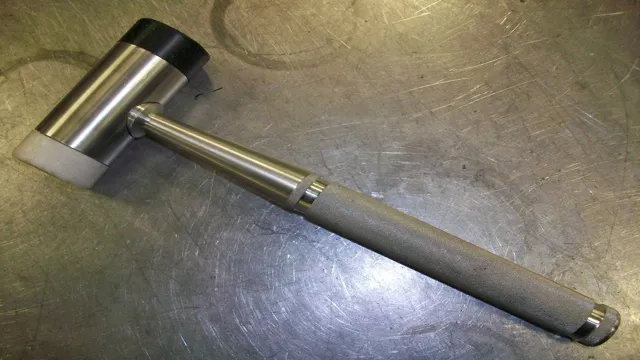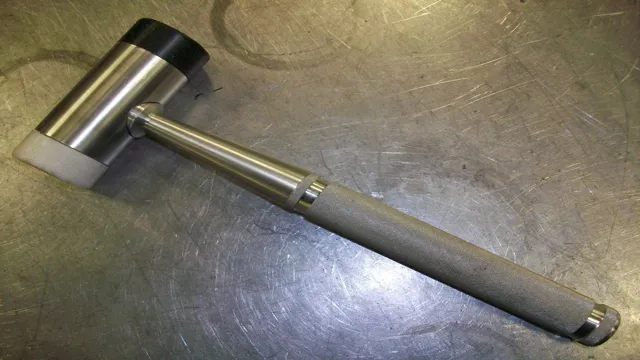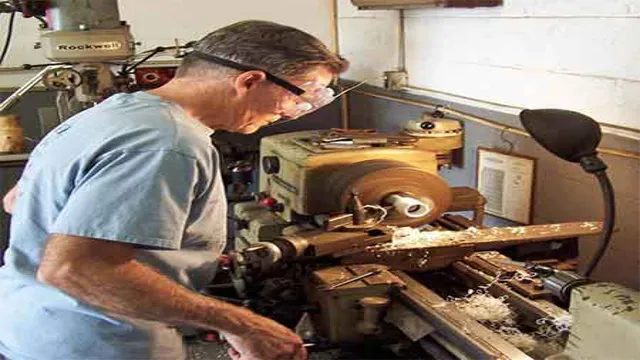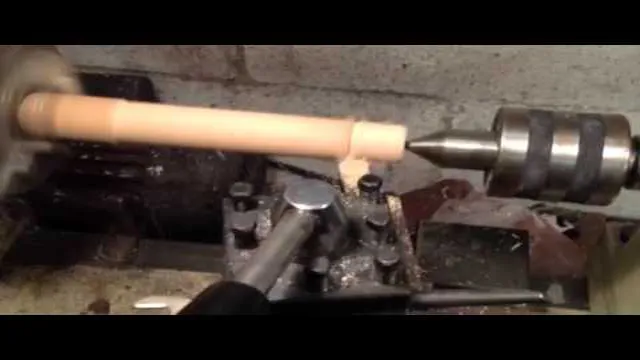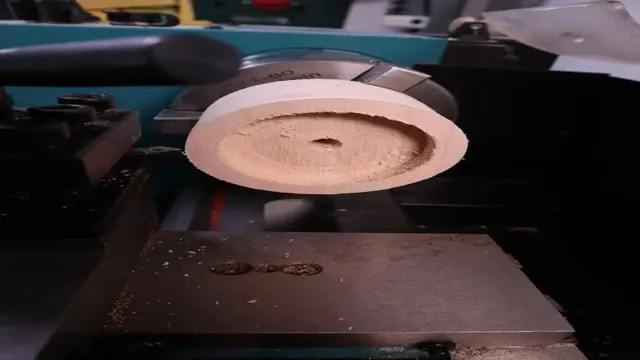What Size Metal Lathe Do I Need? A Comprehensive Guide to Choose the Right Size for Your Project

When it comes to getting a metal lathe, one of the most important factors to consider is its size. Should you go for a big lathe that can handle large projects or a smaller one that’s more versatile? The answer depends on what you plan to use the lathe for and how much space you have. Choosing the right size can make all the difference in how successful you are in your DIY, repair, and metalworking projects.
Let’s explore how to choose the right size metal lathe for your needs.
What is a Metal Lathe?
If you’re looking to purchase a metal lathe, it’s essential to consider the size that will best suit your needs. The question “what size metal lathe do I need?” is a common one, and the answer depends on several factors. The size of the metal that you will be working with is the primary consideration.
If you plan to work with larger pieces, you’ll need a lathe with a bigger swing – that is, the maximum diameter of metal that can be turned on the lathe. Additionally, you should consider the length of the bed, which will determine the maximum length of material that can be turned. There are also other factors to consider such as the horsepower of the motor, the precision of the tool, and the additional features that may be necessary for your specific projects.
It’s important to do your research and determine your needs before making a purchase to ensure that you select a metal lathe that will meet your requirements and help you achieve your desired results.
Definition and Purpose
A metal lathe is a type of machine tool used for shaping and cutting metal materials. It consists of a rotating workpiece and a fixed cutting tool that removes material from the workpiece to create the desired shape. Metal lathes come in different sizes and types, from small benchtop models for hobbyists to large industrial machines used in manufacturing.
The purpose of a metal lathe is to produce precision parts with tight tolerances that are difficult to achieve through other means. Metal lathes can be used to make parts for a variety of industries, such as aerospace, automotive, and medical. By using a metal lathe, manufacturers can save time and money by producing custom parts in-house instead of outsourcing them.
However, it takes skill and experience to operate a metal lathe properly and safely, so proper training and precautions are necessary. Overall, a metal lathe is an essential tool for metalworking that allows for accurate and efficient production of a wide range of parts and components.
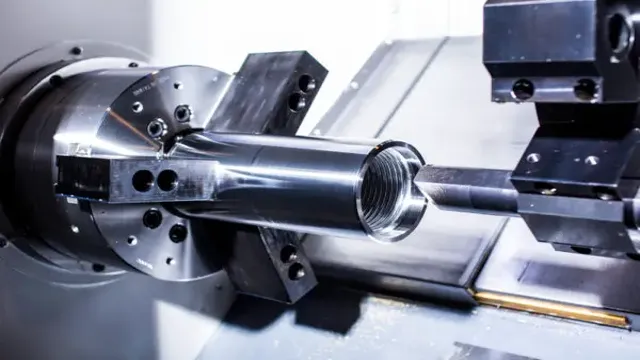
Types of Metal Lathes
A metal lathe is a machine tool that is used to shape metal pieces by cutting, drilling, and sanding. It’s a versatile piece of equipment that comes in different types, each designed for a specific job. The engine lathe, for instance, is the most common type of metal lathe and is used for turning items such as shafts, rods, and pipes.
Turret lathes, on the other hand, are used for repetitive work, for example, when making parts for the automotive industry. Special-purpose lathes, such as ornamental lathes, serve simple functions, such as engraving symmetrical lines on metal’s surface. CNC lathes are the most advanced type and are computer-controlled, making them ideal for complex designs and high-volume production.
Overall, there is a metal lathe that is suited for any metalworking project, whether it’s just one item or many identical items required.
Factors to Consider When Choosing a Size
When choosing a metal lathe, it’s important to determine what size will best suit your needs. A larger lathe may be more powerful and able to handle larger projects, but it may also take up more space and be more expensive. On the other hand, a smaller lathe may be more affordable and take up less room, but it may not be powerful enough for certain types of projects.
Consider what types of projects you will be working on and how much space you have available for the lathe. Additionally, be sure to factor in the weight and portability of the lathe if you plan on moving it around frequently. Ultimately, the size of the lathe you need will depend on your individual needs and preferences.
Size of Workpiece
When it comes to choosing the size of a workpiece, there are several factors to consider to ensure the end result is of the desired quality and meets the intended purpose. First and foremost, one should consider the dimensions of the finished product and its intended use. If the material is too small, it may not fit the intended application, while if it’s too large, it may not be structurally sound or fit within the required space.
Secondly, one should consider the capabilities of the machinery or equipment being used for the fabrication process. If the equipment cannot accommodate the size of the workpiece, it may be necessary to choose a smaller or larger piece of material. Finally, one should consider cost and material waste.
Choosing the appropriate size can help reduce material waste and potentially lower costs. In summary, choosing the correct size for a workpiece requires consideration of the finished product’s dimensions, the capabilities of the equipment, and cost efficiency.
Size of the Lathe Bed
When selecting a lathe bed size, there are several factors to consider based on your woodworking needs and space availability. First, you must consider the size of the projects you intend to work on. If you work on small projects frequently, a bed with a shorter length might suffice.
However, longer bed lengths would be more convenient for larger projects. Space availability is another critical factor. You must measure and evaluate the space available for the lathe and choose a bed size that fits in your work area.
The weight and mobility of the lathe must also be considered. Larger lathes with extended bed lengths tend to be heavier and harder to move around. Therefore, if you plan to move your lathe from one location to another frequently, you might want to opt for a smaller and lighter bed.
With a proper consideration of these factors, selecting the right lathe bed size will allow you to perform your woodturning activities comfortably and seamlessly.
Horsepower and Torque
When it comes to choosing the right size of engine for your vehicle, horsepower and torque are two important factors to consider. Horsepower refers to the amount of power an engine can produce while torque refers to the twisting force produced by the engine. Higher horsepower means your vehicle can accelerate faster while higher torque means your vehicle can tow heavier loads.
It’s important to consider your specific needs when choosing between a higher horsepower or torque engine. For example, if you plan on towing heavy loads regularly, a higher torque engine would be a better choice. On the other hand, if you want a speedy sports car, a higher horsepower engine would be the way to go.
Ultimately, it’s important to find the right balance between horsepower and torque to ensure your vehicle performs optimally for your specific needs.
Speed Range
When it comes to choosing the right size for your bike, there are several factors that you need to consider, one of which is the speed range. The speed range of your bike is determined by the size of the wheels and the gears. If you plan on riding your bike on flat terrain, you may want to consider a smaller wheel size with fewer gears, as this will make it easier to maintain a consistent speed.
However, if you plan on riding on hilly terrain, a larger wheel size with more gears may be a better option, as this will allow you to maintain your speed while climbing. Ultimately, the key is to find the right balance between the size of the wheels and the number of gears to ensure that your bike is both efficient and comfortable to ride. So, take some time to consider your riding style and the terrain you will be riding on when choosing the size of your bike.
Recommended Sizes for Different Projects
When it comes to metal lathes, choosing the right size for your specific project can make a big difference in the results you achieve. The size of a metal lathe is typically measured by the swing, which is the maximum diameter of material that can be turned on the lathe. For smaller projects, a mini-lathe with a swing of 7-10 inches may be suitable.
However, for larger and more complex projects, a larger lathe with a swing of 12-18 inches may be necessary. It’s important to also consider the length of the bed, which determines the maximum length of material that can be turned. Additionally, the horsepower of the motor and the threading capabilities of the lathe are important factors to consider.
Ultimately, the size of the metal lathe you need will depend on your specific needs and the types of projects you plan to tackle. So, when asking “what size metal lathe do I need?”, it’s important to assess your individual needs and research your options before making a purchase.
Small Projects
When deciding on the size of a small project, several factors need to be considered. If you’re creating a graphic design for social media, then the recommended size would be 1080×1080 pixels. For blog post images, on the other hand, the size should be around 1200×800 pixels.
Email headers should be at least 600×300 pixels, while product images should be no less than 1000×1000 pixels to ensure clear and attractive visuals. It’s essential to choose the right size for your project to avoid low-quality images that can negatively impact your brand or presentation. Keep in mind that while smaller sizes are faster to load, they can also compromise image quality.
It’s crucial to strike a balance between optimal image quality and fast loading times to maximize impact and effectiveness.
Medium Projects
When starting a sewing project, it’s important to choose the right size of fabric to ensure the perfect fit. Medium projects, such as making a tote bag or a pillow cover, typically require around 1 to 2 yards of fabric. However, it’s always a good idea to check the specific pattern or tutorial you’re following to determine the exact amount of fabric needed.
Keep in mind that larger projects, like making a quilt or a dress, will require more fabric. On the other hand, smaller projects like keychains or hair accessories may only require a few inches of fabric. By choosing the right size of fabric, you can ensure that your sewing project turns out just the way you envision it.
Large Projects
For large projects, it can be challenging to determine the right size for everything from the team to the budget. However, there are some recommended sizes to help guide you. For example, a project that involves a team of more than 10 people or takes longer than six months is generally considered to be a large project.
In terms of budget, large projects often require significant financial resources, with some experts recommending a minimum of $1 million. Of course, the specific size of a project can vary depending on various factors, such as the industry, scope, and goals of the project. It’s important to carefully consider all of these factors before determining the appropriate size for your project.
By taking the time to assess the project’s needs, you can set yourself up for success and help ensure that your project is completed on time and within budget.
Conclusion
In the world of metalworking, the size of your lathe is less about compensating for any shortcomings and more about giving you the flexibility in machining that you need. Whether you’re aiming to create small intricacies or large-scale pieces, there’s a metal lathe out there that can get the job done. So, to put it simply, the size of the lathe you need is the one that matches your vision and ambition – because when it comes to metalworking, the sky’s the limit!”
FAQs
What factors should I consider when choosing a metal lathe size?
When choosing a metal lathe size, factors to consider include the size of the materials you will be working with, the type of projects you will be undertaking, and the amount of space you have available in your workshop.
What is the difference between a mini metal lathe and a full-size metal lathe?
A mini metal lathe is smaller and more compact than a full-size metal lathe. This makes it easier to store and transport, but it also means that it has a smaller working area and may not be able to handle larger materials or more complex projects.
How much does a metal lathe typically cost?
Metal lathes can vary widely in price, depending on their size, features, and quality. A basic mini metal lathe can cost as little as $400, while a larger, more professional-grade metal lathe can cost upwards of $5,000 or more.
Do I need any special training or skills to use a metal lathe?
Yes, using a metal lathe does require some training and skill. It is important to read the manufacturer’s instructions carefully, start with simple projects, and always wear appropriate safety gear when using the lathe.
Can I use a metal lathe to work with other materials besides metal?
While metal lathes are primarily designed for working with metal materials, some can also be used to work with other materials such as plastic or wood. However, it is important to make sure that the lathe is specifically designed and equipped for such materials before attempting to use it in this way.
How do I maintain and care for my metal lathe?
To maintain and care for your metal lathe, it is important to regularly clean and oil all moving parts, keep it covered when not in use, and perform any necessary repairs or maintenance as soon as possible.
What are some common safety concerns when using a metal lathe?
Some common safety concerns when using a metal lathe include the risk of entanglement or injury from moving parts, the risk of projectiles or debris being thrown from the lathe, and the risk of eye or ear damage from exposure to noise and flying particles. It is important to always wear appropriate safety gear, follow all manufacturer instructions and guidelines, and use caution when operating the lathe.

